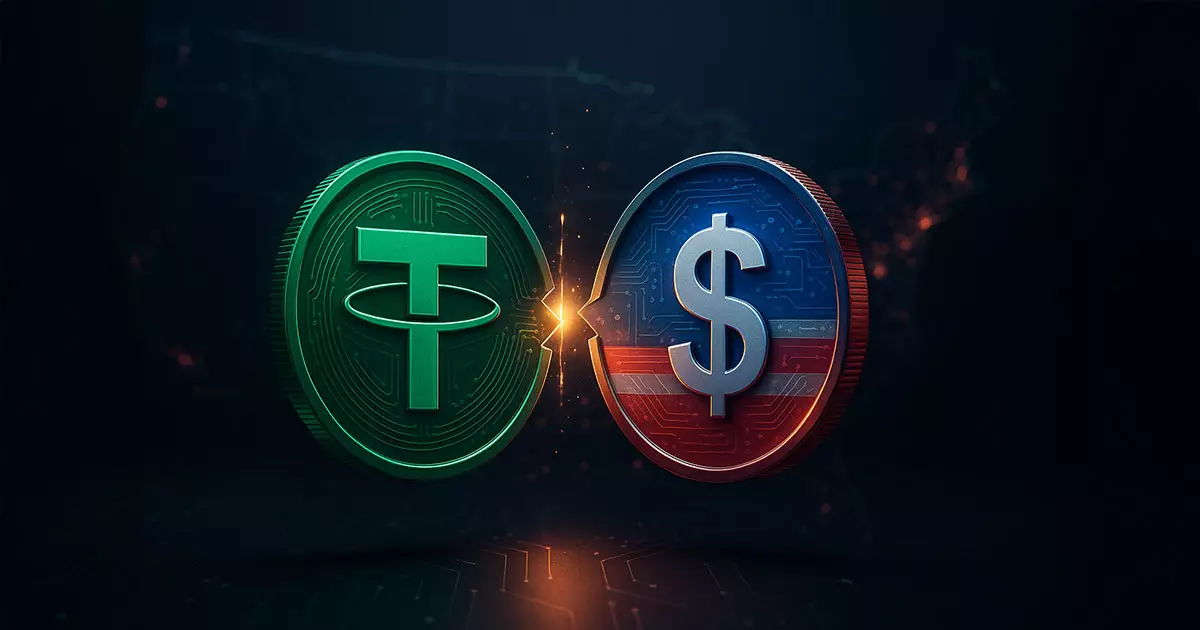In a move that could fundamentally reshape the contours of the U.S. financial ecosystem, Tether CEO Paolo Ardoino recently expressed the company’s willingness to create a domestic stablecoin tailored to American users. This announcement comes at a critical juncture, with the U.S. government pushing for stablecoin legislation through the GENIUS Act. For those unfamiliar, Tether is the issuer of the most widely used stablecoin, USDT, which has garnered substantial traction particularly in emerging markets. Ardoino’s openness to a domestic stablecoin amplifies the discussion about the role digital currencies could play in times of financial transformation.
Catering to Specific Needs: The U.S. vs. Emerging Markets
While the U.S. boasts a plethora of established payment systems, Ardoino recognized that the motivations for utilizing stablecoins differ starkly between America and emerging economies. USDT has predominantly served users in countries with unstable currencies, acting as a financial lifeline for 1.4 billion unbanked adults worldwide. However, Ardoino argues that the United States requires a form of stablecoin that fulfills distinct functions, pointing to the inefficiencies in local payment methods that might still exist. This dichotomy highlights the need for a different “feature set” in Tether’s domestic stablecoin, ensuring it aligns with the specific requirements of the American financial landscape.
The Promise of Regulatory Clarity
The clarity from the U.S. Senate regarding stablecoin regulation is an essential part of this evolving narrative. Ardoino sees the GENIUS Act as an opportunity for Tether to navigate the complexities of compliance, framing the U.S. regulatory landscape as favorable compared to Europe’s MiCA regulation. The latter mandates 60% of reserves in cash deposits in European banks, which Ardoino famously critiqued as “a bad idea.” Comparatively, the GENIUS Act requires stablecoin issuers to back their currencies 100% with cash equivalents, ideally U.S. Treasuries. This could very well become the template for not just Tether, but for various entities looking to enter the stablecoin space, sparking competition and innovation in digital finance.
Empowering the Unbanked
An often-overlooked aspect of Ardoino’s advocacy for USDT is its pivotal role in empowering those without bank accounts. With around 37% of USDT users relying on it primarily for savings, the digital dollar alternative is transforming lives in regions where traditional banking is ineffectual. A domestic stablecoin would only enhance this narrative, providing American users—especially the underbanked—with a stable alternative to traditional currency. This sense of stability could be especially crucial in economic downturns or during periods of inflation, where everyday Americans can store their value in a digital format with the resilience of the U.S. dollar backing it.
Future of Financial Inclusion
As Tether edges closer to launching its domestic stablecoin, it emphasizes the impact this strategy could have on financial inclusion in the U.S. Ardoino expresses that stablecoins can broaden access to financial services and offer a tangible means of economic stability for those often overlooked by traditional banking systems. By prioritizing the American domestic market while still recognizing the global impact of USDT in emerging markets, Tether is poised to lead the charge towards more inclusive financial systems in the U.S. As the domestic stablecoin evolves, it could ignite a larger conversation about the future relationship between cryptocurrencies and traditional currencies.
A Competitive Edge in the Financial Arena
Ultimately, Tether’s ambition to introduce a domestic stablecoin demonstrates the crucial intersection of innovation and compliance in the financial sector. By distinguishing itself through a unique feature set tailored to the U.S. market, Tether might not only compete more effectively but also set the benchmark for stablecoin regulation and operation in the new age of digital finance. Ardoino’s proactive approach to governmental collaboration could inspire other cryptocurrency projects to pursue similar avenues, laying the groundwork for a more stable and integrated financial future. Though the challenges are abundant, the potential for Tether’s domestic stablecoin to catalyze change in the U.S. economy cannot be understated; it could well be the spark that reignites confidence in the financial systems that underpin everyday lives.
















Leave a Reply